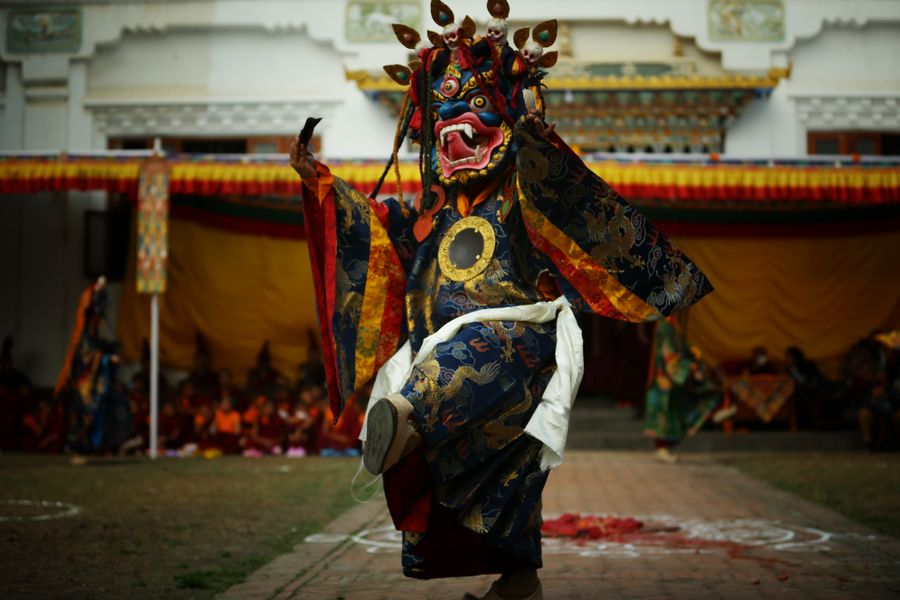
A Buddhist Lama in Traditional attire performs during Cham dance at a monastery in Kathmandu, Nepal, Feb. 22, 2020. (Xinhua/Sulav Shrestha)
KATHMANDU, Feb. 23 (Xinhua) -- The monks in Nepal took up the roles of deities and demons, and put up a mock-battle as an act of cleansing of evil forces in their traditional cham dance performance.
While the true history and origins of this Cham dance are hard to trace, the tradition is said to be started in the late 8th CE, when the king of Tibet got rid of evil spirits. The ritual dance is now performed at most of the monastic festivals.
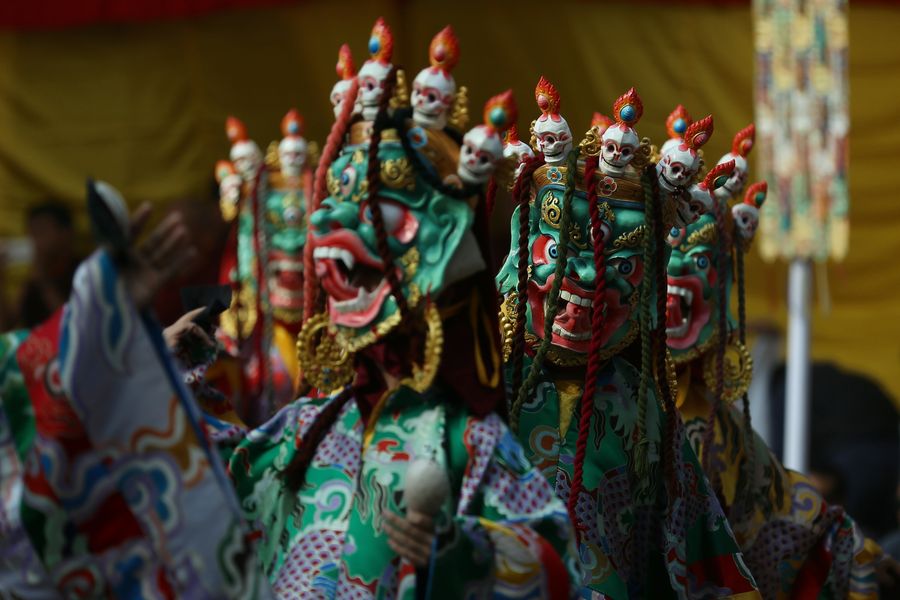
A Buddhist Lama in Traditional attire performs during Cham dance at a monastery in Kathmandu, Nepal, Feb. 22, 2020. The tradition is deeply rooted and practiced in China's Tibet, Bhutan, India and Nepal. (Xinhua/Sulav Shrestha)
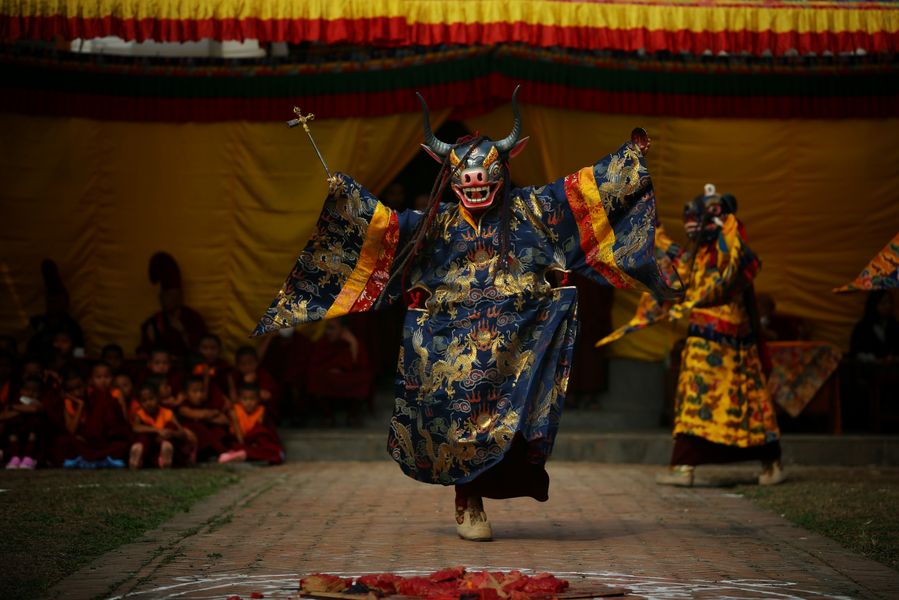
A Buddhist Lama in Traditional attire performs during Cham dance at a monastery in Kathmandu, Nepal, Feb. 22, 2020. The word "chams", meaning "a dance", originated from Tibetan. (Xinhua/Sulav Shrestha)
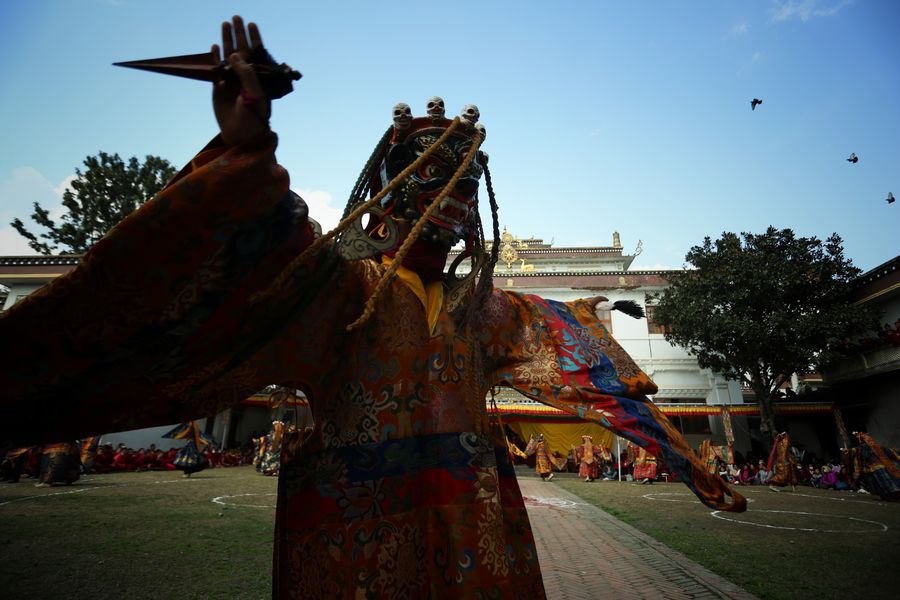
A Buddhist Lama in Traditional attire performs during Cham dance at a monastery in Kathmandu, Nepal, Feb. 22, 2020. The dance is also a form of meditation and an offering to the gods. (Xinhua/Sulav Shrestha)
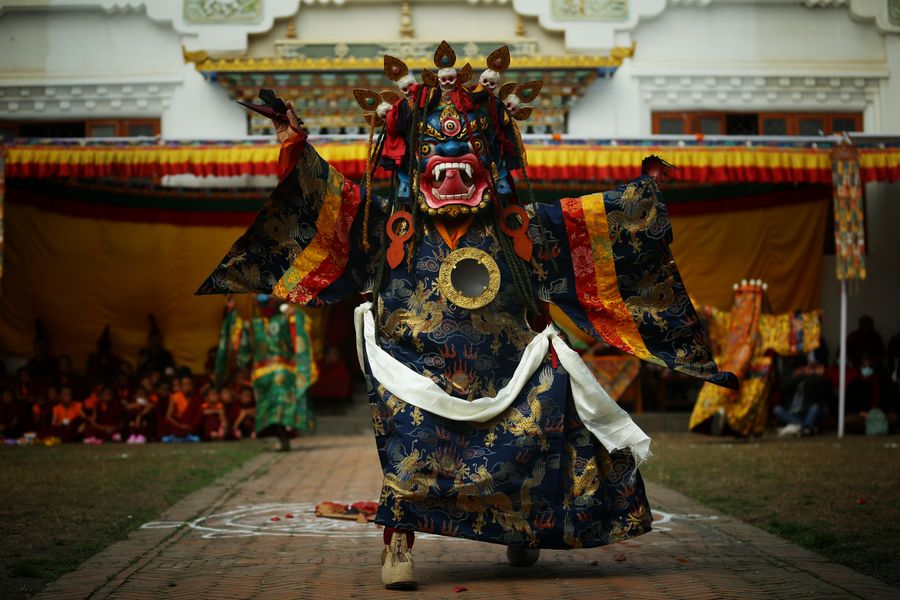
A Buddhist Lama in Traditional attire performs during Cham dance at a monastery in Kathmandu, Nepal, Feb. 22, 2020. The masks are generally about two or three times the size of a normal human head. (Xinhua/Sulav Shrestha) ■



